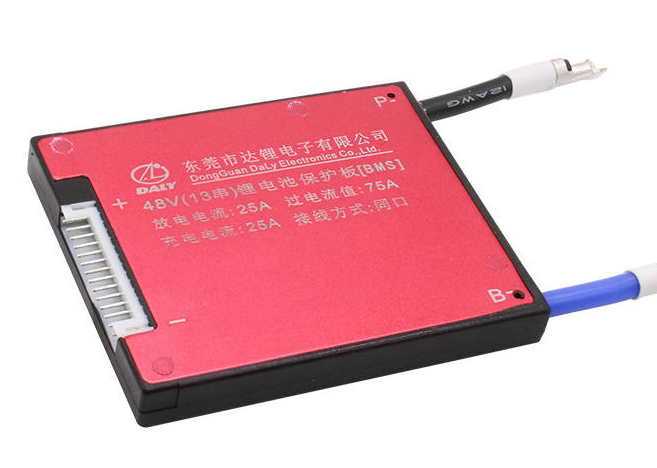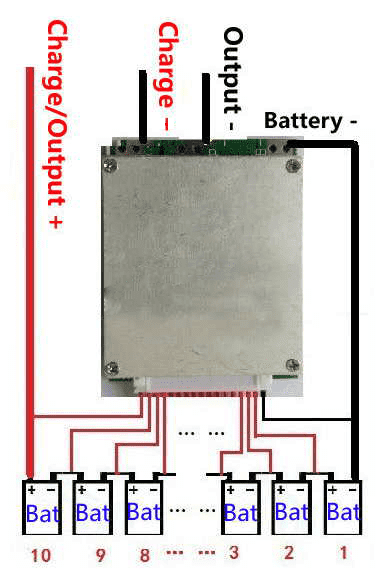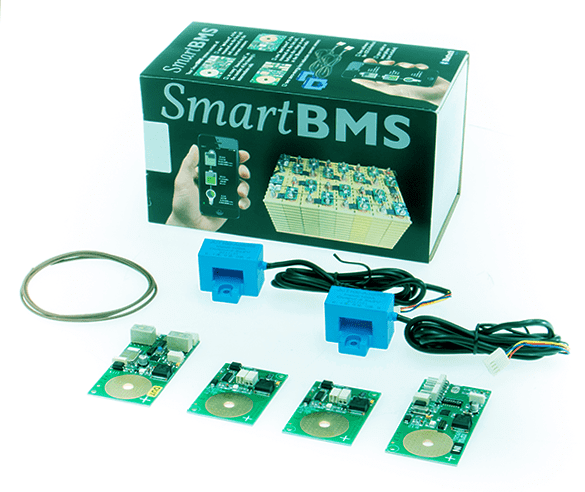Choosing the Right BMS for Your E-Bike
BMS (Battery Monitoring System) is an electronic board that is installed between the actual battery and the power wires in order to control the process of its charge / discharge, monitor the status of the battery and its elements, control the temperature, the number of charge / discharge cycles and protect the components of the battery.
The choice of BMS is a fairly broad topic. In this article, we’ll look at the types of BMS available on the market and what criteria you should pay attention to when choosing a BMS for your e-bike.
In general, there are two global types of BMS out there, let’s call them simple and professional.
Simple BMS
2 wire BMS
Simple BMS are cheap, easy to understand for non-technical people. They usually have 2 wires with which they are connected to the battery: B- and P-. As soon as the battery no longer needs to be charged, the BMS cuts off the power safely.
Usually, BMS from the lower price range have a quite simple construction. They consist of a shunt with which they measure current, and current protection system (simple MOSFET transistors that disconnect the load when overloaded).
3 wire BMS
There is also another variant of a simple BMS which has 3 wires: B-, P-, C-. This configuration requires an external charger, the load P-, and B- is connected with a separate wire. Thus, these chains are separated, which is more efficient.
Structurally, the 3-wire BMS consists of a pair of counter-directed transistors that switch charge and discharge currents. Due to this, either first or the second pair is turned on/off.
In general, it is preferable to use a BMS with 3 wires.
Advantages
- Low price
- Low device complexity
- Easy to connect
Disadvantages
One of the disadvantages of simple BMS is that they switch current with the help of field-effect transistors. When the currents are small, everything works great, but when the currents start to exceed 50A, the entire device starts to warm up pretty decently.
As soon as we cross 3-5 kW range, we immediately face a huge problem: how to dissipate all that heat? In this case, the usage of a simple BMS becomes problematic.
Almost all of the simple BMSs that are put on electric bikes and scooters are made that way.
Professional BMS
When we have pretty large currents for both charge and discharge, the current switching method described above is no longer suitable for us.
More powerful BMS configs include central computer - a signal processing device.
They have a separate relay that switches the current. All modules transmit information to the main unit, which can either pass it to the central computer or make decisions on switching on/off the relay, which controls the load.
All subsystems communicate with each other with the help of a digital bus. The most common digital bus is the CAN bus. This is an established standard in the automotive industry.
If earlier there were other data buses, now CAN is being used almost everywhere.
There is no central computer in electric bicycles, but there are several independent units: BMS, controller and the motor itself.
There are variants when the role of the central computer is performed by Cylcle Analyst. The advantage of this approach is simplicity. Each of the blocks can be replaced individually.
Disadvantages
The first disadvantage of a professional BMS is the high price. The second one - high complexity. It is one thing to connect 3 wires, and it is completely another thing to integrate a complex BMS without breaking or burning any equipment along the way.
But, hey, with the thorough preparation and detailed manual everyone will be able to install BMS on their bike.
The price
There is a quite competitive market in this field. The price of the simple BMSs is small - about $ 10 per item. For more professional BMS, the price per one battery cell immediately jumps 10 times higher.
That’s why professional BMSs are not so often installed on electric bikes and scooters.
People see the big difference in price and ask themselves - ”Why do I need to pay more?” The reality is such that, it is almost impossible for a professional expensive BMS to compete with the simple BMSs out there.
Simple minimalistic design, low price will always win the affection of a regular consumer.
So, you may ask, ”Why would I need this expensive BMS anyway?”
Well, as soon as your BMS starts to warm up significantly and can no longer cope with the working currents, you should consider switching to a more expensive professional BMS.


